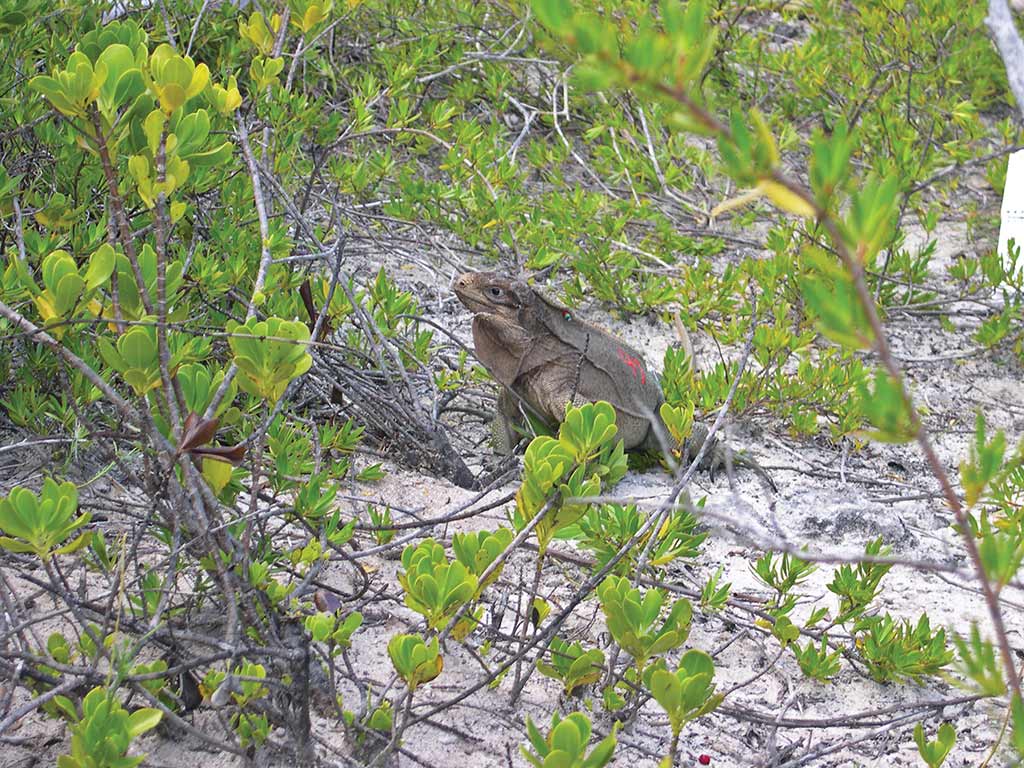Low cages adjacent to Anegada’s government administration building are temporary home to dozens of critically endangered Anegada rock iguanas. The BVI National Parks Trust operates the iguana head-start facility, where hatchlings are housed until they grow large enough to survive on their own.

The Anegada rock iguana is making a comeback, thanks to the iguana head-start program. Photo © Susanna Henighan Potter.
Development has pushed the animals out of every island except Anegada.Before the 1960s, iguanas outnumbered people on Anegada. The creatures roamed the island’s limestone wilderness, nesting in the summer, while finding plants, fruit, and the occasional centipede for food.The Anegada rock iguana, also called the stout iguana, grows up to six feet long and can live up to 80 years. It is native to the entire Puerto Rican bank—the islands that stretch from Puerto Rico to St. Croix—but development has pushed the animals out of every island except Anegada, where for many years it was unbothered by hunting, human encroachment, or predators. But development brought new threats for the iguanas, particularly an upswing in the population of feral cats on Anegada. Cats, it turns out, like the taste of iguana hatchlings. Habitat loss and roaming livestock also contributed to their decline. By the early 1980s, estimates put the population at fewer than 300 animals.
In 1997 the BVI National Parks Trust opened an iguana head-start facility with a half dozen young hatchlings collected from the wild. Young iguanas live in screened in cages at the facility for about six years until they are large enough to survive on their own in the wild. Since the facility opened, more than 170 iguanas have been released, and scientists track their progress through satellite devices.
Iguanas do live in the wild, but they are difficult to find. The animals are shy, and they sense your presence long before you know they are there. If you do get near one, you will likely hear it scampering away through the bush before you can lay eyes on it. If you really want to glimpse an iguana—and they are worth seeing—visit the head-start facility.
The facility includes a small visitors center (8:30am-4:30pm Mon.-Fri.), although NPT staff sometimes leave to attend to fieldwork. If the facility is closed, ask around the island for NPT representative Rondel Smith.
Excerpted from the Sixth Edition of Moon U.S. & British Virgin Islands.